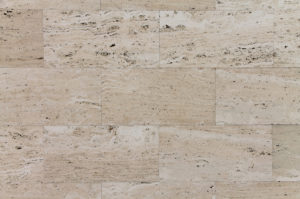If you have travertine in your home then it’s likely you have a questions or two about its care. At Fuller Stone Care, we recommend that you call us with any specific questions. That said, you can also read on to get answers to some of your most common questions. If you don’t find the answers you need, or you want a free quote for our travertine care services, please reach out at 855-205-0972.
Is it necessary to seal travertine?
Absolutely. Travertine is not just porous, it’s also soft. This combination means that you absolutely want to seal it. Note that sealant isn’t magic and isn’t going to prevent 100% of etching or staining issues, it can significantly reduce the chances that will be damaged. Just be sure that if you ever spill on it, you clean up the mess right away.
What’s the best sealant for travertine?
The most important thing is to not use a topical sealant. These simply sit on top of your stone, which means that your travertine isn’t able to breathe the way it should, which can leady to a film on your stone. On the other hand, a penetrating sealer can actually get into the pores of your stone. This offers better protection and doesn’t change the way the stone looks.
If you want the name of a specific sealer to use, reach out to Fuller Stone Care. We have a favorite option that’s very resistant to both flaking and pealing. It’s also great when it comes time to reseal your stone, because it actually bonds with itself. As a result, you don’t need to strip it before resealing.
How often do I need to seal travertine?
We recommend that most travertine surfaces be released once a year. In some cases, it may make sense to reseal twice a year. We typically recommend a two-times-a-year schedule if your travertine is light in color or if it is in a high traffic area.
What’s the difference between polished, tumbled, and honed travertine
Honed travertine is the option you want if you’re looking for a surface that has a matte finish that doesn’t show scratches and etch marks. It’s often used for showers and flooring. Polished travertine has more resistance to staining and absorbing water. Finally, tumbled travertine is a top choice for those who want something rustic.
Is there a difference between filled travertine and natural travertine?
Yes. Travertine is naturally find at mineral springs and is actually a category of limestone. As a result of its natural process, there are many tiny holes in it. If you have natural travertine, nothing is done to these holes. If you have filled travertine, these holes are filled in the factory. Note that natural travertine can be more challenging to clean, but on the other hand, filled travertine needs additional maintenance to refill the holes.
If you’re ready to learn more about the best options for your own travertine surface then we’re ready to work with you. Reach out to Fuller Stone Care at 855-205-0972 for your free estimate. We look forward to helping create travertine surfaces you’ll love.

